MailOnline | February 5, 2014 | By Sara Malm
Hundreds of feet below a Russian city is an abandoned salt mine which might as well be the inside of a rave.
The walls are covered with psychedelic patterns, caused by the natural layers of mineral carnallite creating swirls throughout the colored rock.
Carnallite is used in the process of plant fertilization, and is most often yellow to white or reddish, but can sometimes be blue or even completely colorless.
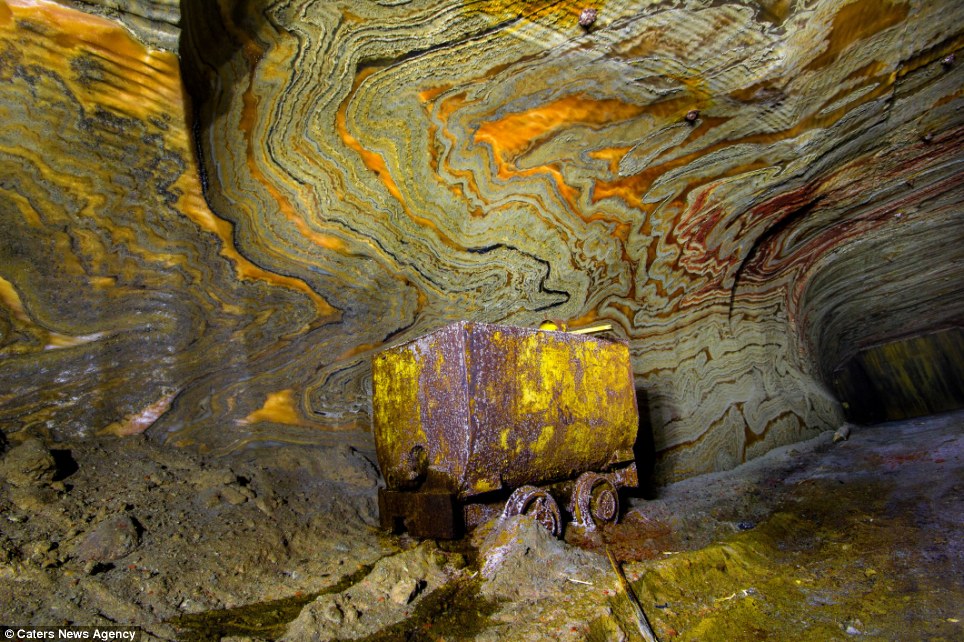
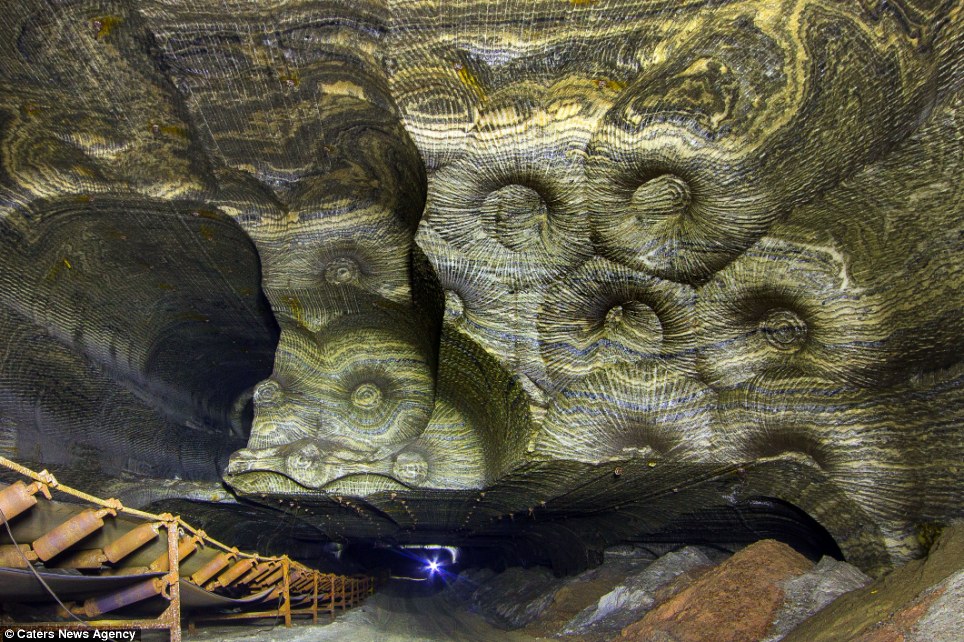
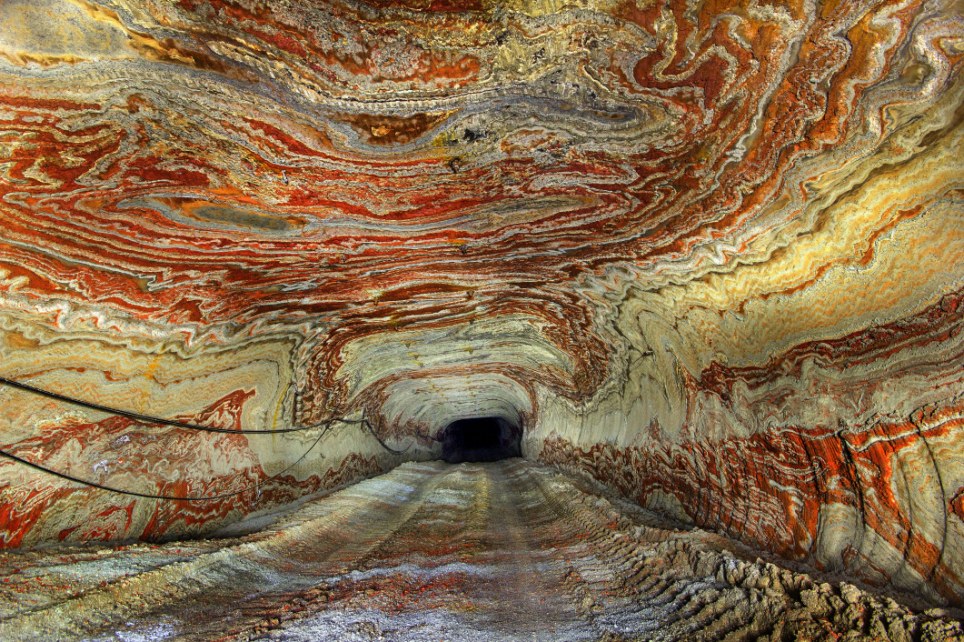
Although a small part of the mine is still in use, miles of tunnels now lay abandoned and are only accessible with a special government permit.
But that didn’t stop photographer, Mikhail Mishainik, 29, from exploring the network of passageways under ground near the industrial city of Yekaterinburg, Russia.
The Russian adventurer spent over 20 hours exploring the dimly lit labyrinth and has stayed overnight on at least three occasions.
But if sleeping 650ft below the Earth’s surface isn’t nerve wracking enough, Mikhail and his friends are also at risk of gas leaks and landslides.
Mikhail said: ‘The mines are huge and stretch many kilometres in width and length, a single tunnel can be over four miles long. It is hard to describe how it feels being so far down, you lose all track of time and the air is very dry, you always feel thirsty.’

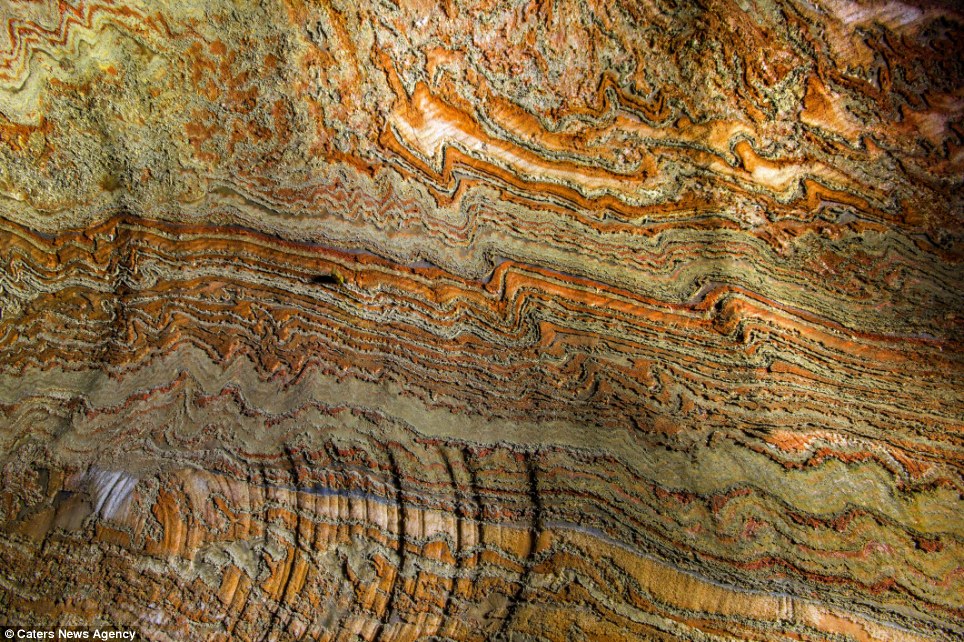
hundreds of feet underground to photograph the salt mine
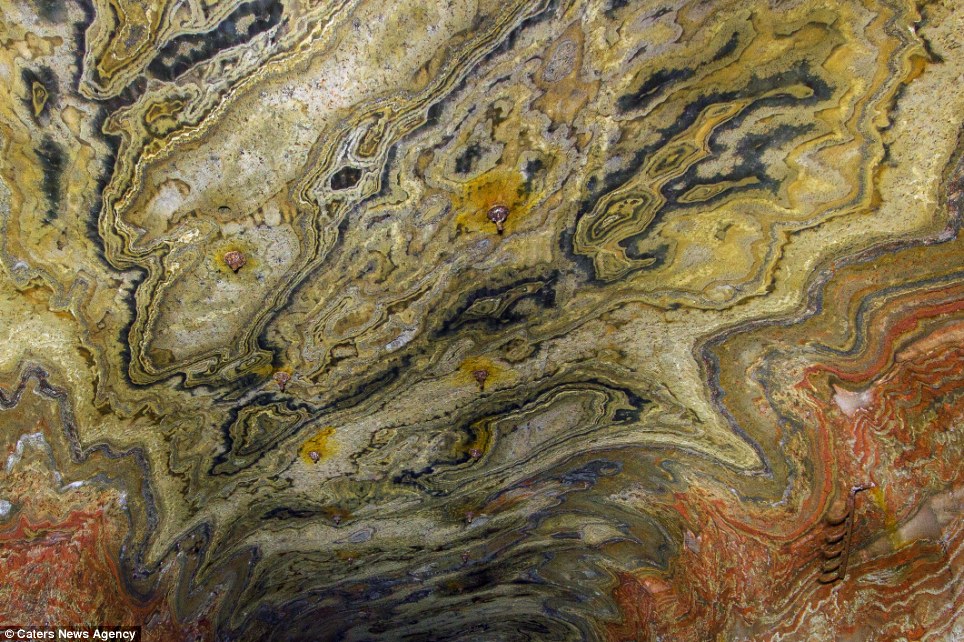
or even completely colourless

‘The air is filled with small particles of salt and if we didn’t have our torches switched on it would be pitch black.
‘It is easy to get lost as many of the passageways look the same, we navigate our way around very carefully.
Many people know about the mines but it is very difficult to access them if you don’t have an official permit.
‘We take our safety very seriously but of course there are always dangers.
‘There is the possibility of a gas leak from chemicals such as methane, hydrogen sulphide carbon dioxide as well the risk of a landslide.
‘The danger element is part of the fun and it’s a special feeling being somewhere very few people have seen.’
See more images at MailOnline



